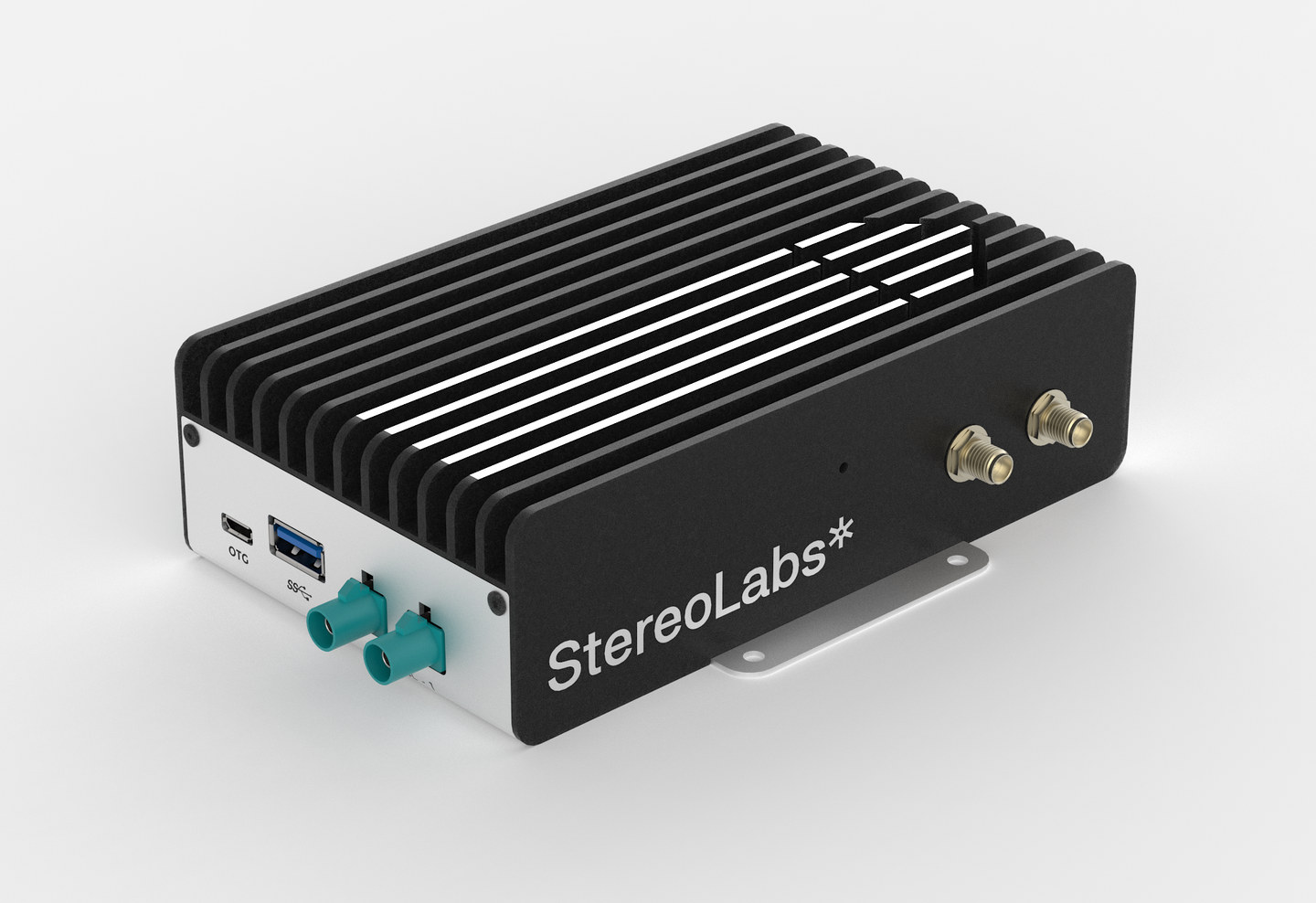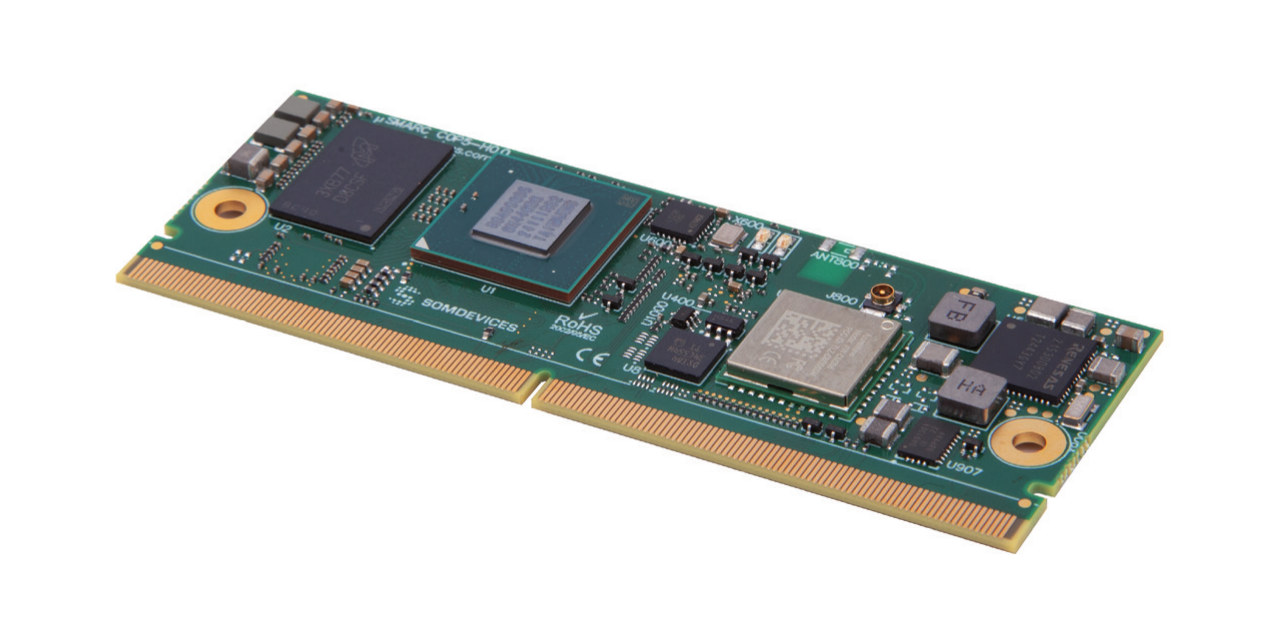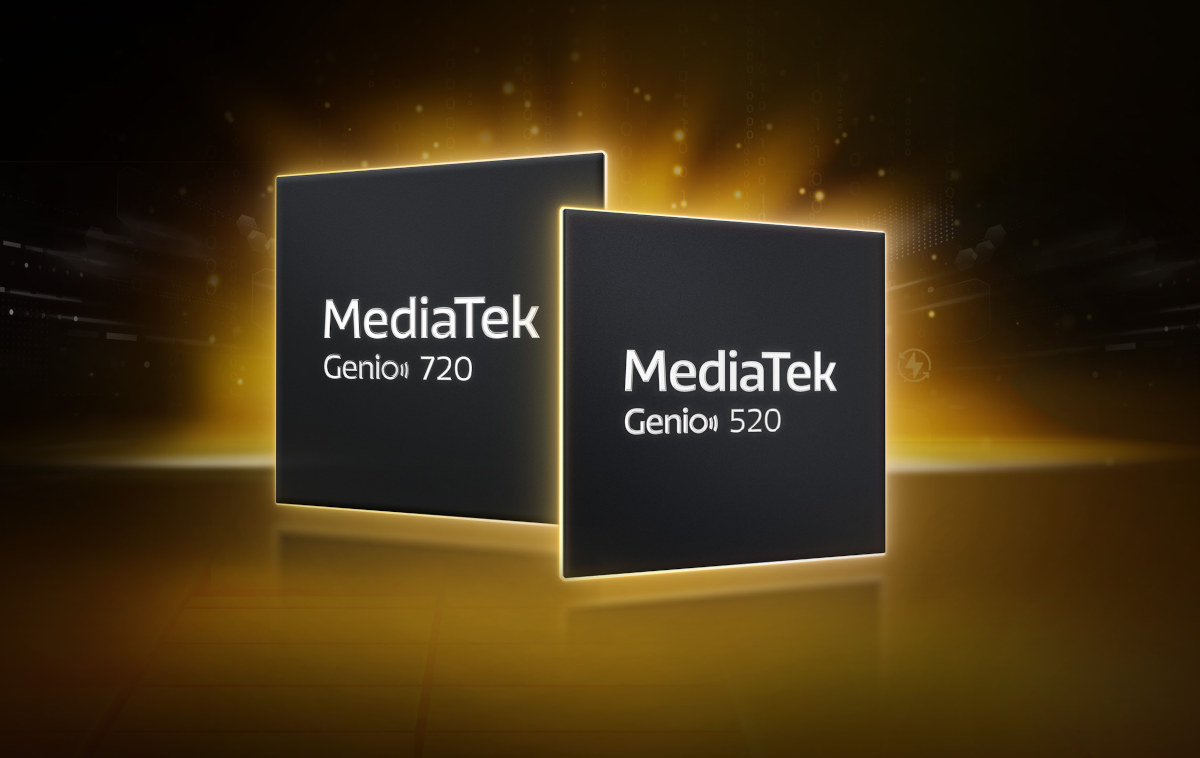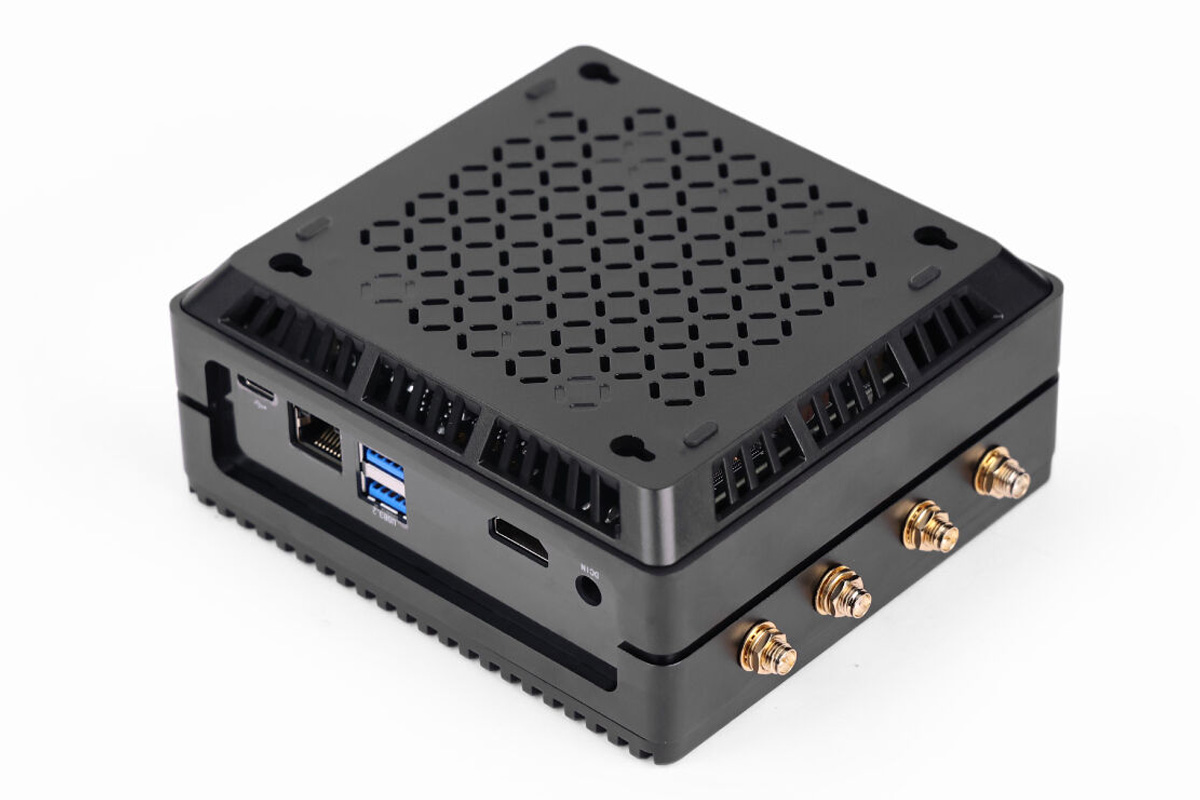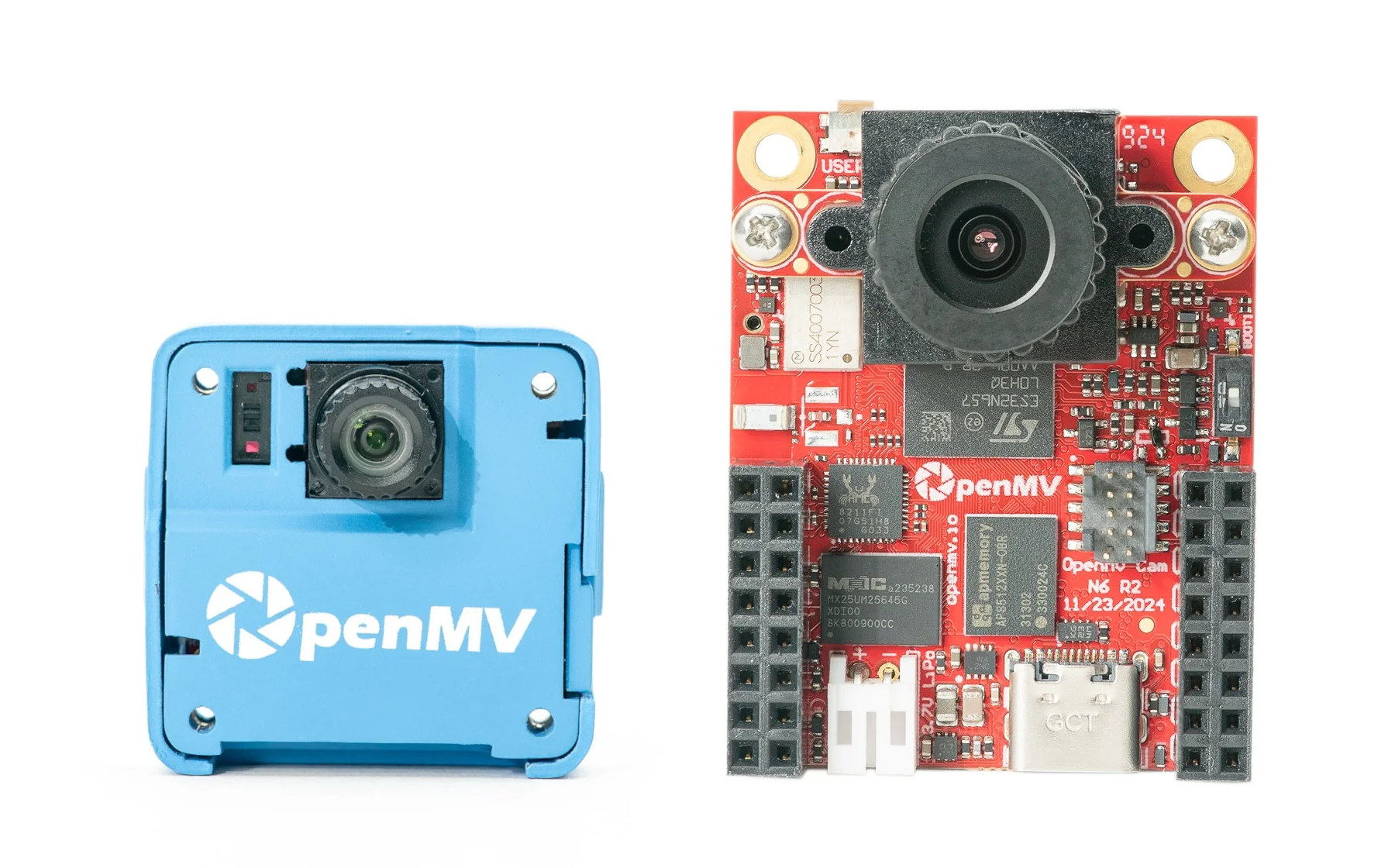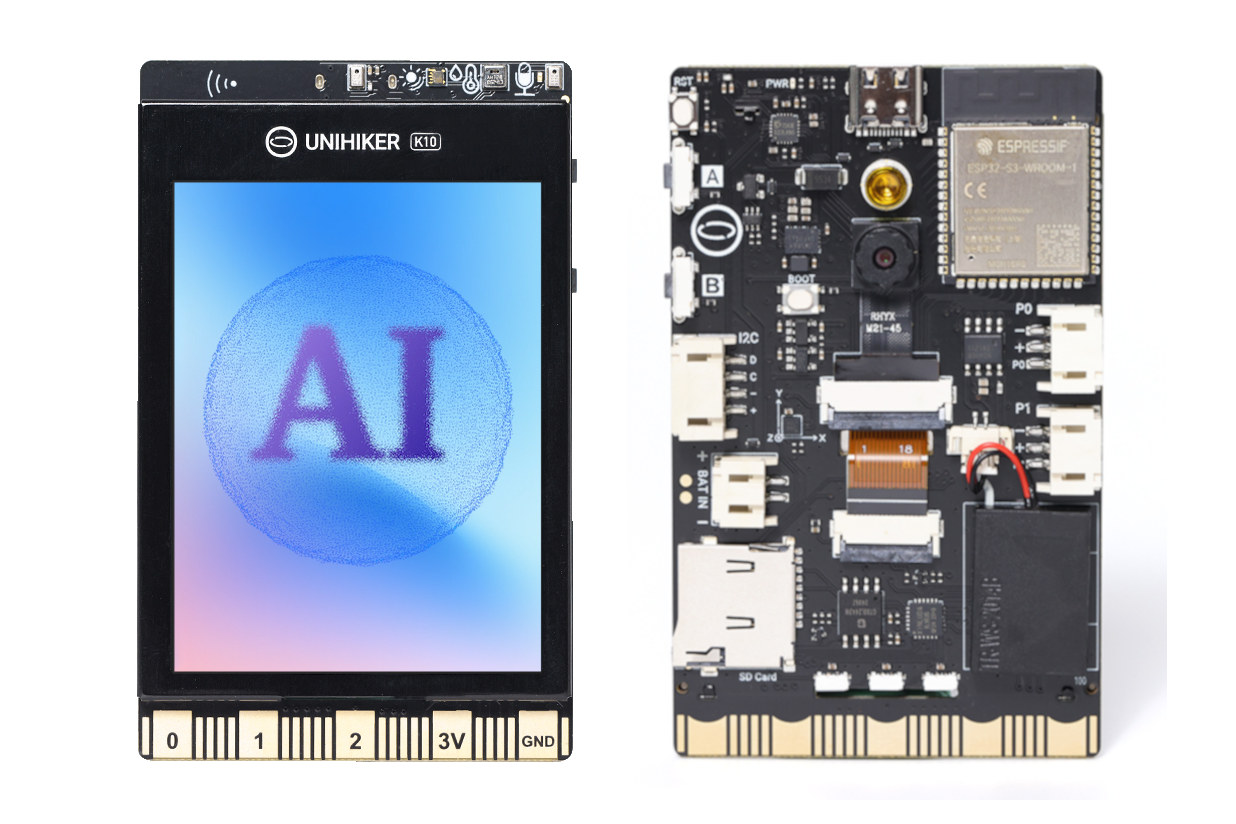Stereolabs ZED Box Mini “Super” is a compact mini PC based on NVIDIA Jetson Orin Nano or NX system-on-module and equipped with two GMSL2 camera inputs with synchronization trigger input/output, enabling AI Vision processing for robotics and smart infrastructure. The AI vision mini PC / embedded computer unit (ECU) also features a 256GB SSD, HDMI 1.4/2.1 video output, a gigabit Ethernet port, an optional Intel AX201 wireless module with two external antennas, a USB 3.0 port, a micro USB port for flashing the OS, and a 10-pin GPIO header with CAN Bus and UART for expansion. ZED Box mini specifications: System-on-Module (one or the other) NVIDIA Jetson Orin Nano 4GB | 34 TOPS NVIDIA Jetson Orin Nano 8GB | 67 TOPS NVIDIA Jetson Orin NX 8GB | 117 TOPS NVIDIA Jetson Orin NX 16GB | 157 TOPS Storage – 256GB SSD inserted in M.2 Key-M 2242 socket Video Output – […]
SOMDEVICES µSMARC RZ/V2N system-on-module packs Renesas RZ/V2N MPU in a 82x30mm “micro SMARC” form factor
SOMDEVICES µSMARC RZ/V2N is a system-on-module powered by the Renesas RZ/V2N AI MPU and offered in a micro SMARC (µSMARC) form factor that’s quite smaller at 82x30mm than standard 82x50mm SMARC modules. The company told CNX Software it’s still 100% compatible with SMARC 2.1 with a 314-pin MXM 3.0 edge connector. It’s also cost-effective with a compact PCB and can be used in space-constrained applications. The µSMARC features up to 8GB LPDDR4, up to 128GB eMMC flash, two gigabit Ethernet PHY, and an optional WiFi 5 and Bluetooth 5.1 wireless module. µSMARC RZ/V2N specifications: SoC – Renesas RZ/V2N CPU Quad-core Arm Cortex-A55 @ 1.8 GHz Arm Cortex-M33 @ 200 MHz GPU – Arm Mali-G31 3D graphics engine (GE3D) with OpenGL ES 3.2 and Open CL 2.0 FP VPU – Encode & decode H.264 – Up to 1920×1080 @ 60 fps (Renesas specs, but SOMDEVICES also mentions up to 4K @ 30 […]
Canonical now officially supports Ubuntu on NVIDIA Jetson system-on-modules
The NVIDIA JetPack SDK has been based on Ubuntu ever since it was created (although the Jetpack 6 SDK changed that somewhat), so I was surprised to read that Canonical now officially supports Ubuntu on NVIDIA Jetson, since I assumed there may have already been a partnership in place. The announcement explains that Canonical has announced the General Availability (GA) of Ubuntu for the NVIDIA Jetson Orin for edge AI and robotics “bringing enterprise-grade stability and support” to the popular system-on-modules. Canonical further explains the collaboration enables better performance with optimized Ubuntu images for the NVIDIA Jetson platform, enterprise-level security with updates and long-term support, a unified environment from edge to cloud, and improved stability and reliability with Canonical’s QA team performing over 500 OS compatibility-focused hardware tests. If we visit the NVIDIA Jetson page of the Ubuntu website, we’ll find Ubuntu Server 22.04 images for the Jetson AGX Orin, […]
MediaTek Genio 720 and 520 AIoT SoCs target generative AI applications with 10 TOPS AI accelerator
The announcement of the MediaTek Genio 720 and Genio 520 octa-core Cortex-A78/A55 AIoT SoCs is one of the news I missed at Embedded World 2025. The new models appear to be updates to the Genio 700 and Genio 500 with a beefier NPU, and the Taiwanese company says the new Genio series supports generative AI models, human-machine interface (HMI), multimedia, and connectivity features for smart home, retail, industrial, and commercial IoT devices. Both are equipped with a 10 TOPS NPU/AI accelerator for transformer and convolutional neural network (CNN) models and support up to 16GB of LPDDR5 memory to handle “edge-optimized” (i.e. quantized) large language models (LLMs) such as Llama, Gemini, Phi, and DeepSeek, and other generative AI tasks. MediaTek Genio 720 and Genio 520 specifications: Octa-core CPU Genio 520 2x Arm Cortex-A78 up to 2.2 GHz (Commercial) or 2.0 GHz (Industrial) 6x Arm Cortex-A55 up to 2.0 GHz (Commercial) or […]
Seeed reComputer J3010B Edge AI PC features NVIDIA Jetson Orin Nano with up to 67 TOPS of AI performance
Seeed Studio’s reComputer J3010B Edge AI PC is built around the NVIDIA Jetson Orin Nano module, which offers up to 67 TOPS AI performance (67 TOPS in super mode), with up to 8GB LPDDR5 memory, and a pre-installed 128GB NVMe SSD for storage. The mini PC features two USB 3.2 ports, HDMI 2.1 video output, a Gigabit Ethernet jack, M.2 slots for SSD and Wi-Fi, a mini PCIe socket for LTE, a 40-pin GPIO header, and a 12-pin UART header. With a compact aluminum case and active cooling, it has an operating temperature range of -10 to 60°C and can be powered via a DC 9-19V input. These features make this device useful for AI, IoT, and edge computing applications, such as smart lampposts for traffic monitoring, EV battery swapping and charging systems, smart recycling centers for waste management, and more. reComputer J3010B specifications: SoM options NVIDIA Jetson Orin Nano […]
MicroPython-programmable OpenMV N6 and AE3 AI camera boards run on battery for years (Crowdfunding)
OpenMV has launched two new edge AI camera boards programmable with MicroPython: the OpenMV AE3 powered by an Alif Ensemble E3 dual Cortex-M55, dual Ethos-U55 micro NPU SoC, and the larger OpenMV N6 board based on an STMicro STM32N6 Cortex-M55 microcontroller with a 1 GHz Neural-ART AI/ML accelerator. Both can run machine vision workloads for several years on a single battery charge. The OpenMV team has made several MCU-based camera boards and corresponding OpenMV firmware for computer vision, and we first noticed the company when they launched the STM32F427-based OpenMV Cam back in 2015. A lot of progress has been made over the years in terms of hardware, firmware, and software, but the inclusion of AI accelerators inside microcontrollers provides a leap in performance, and the new OpenMV N6 and AE3 are more than 100x faster than previous OpenMV Cams for AI workloads. For example, users can now run object […]
IMDT V2N Renesas RZ/V2N SoM powers Edge AI SBC with HDMI, MIPI DSI, dual GbE, WiFi 4, and more
IMD Technologies has recently introduced the IMDT V2N SoM based on the newly launched Renesas RZ/V2N low-power AI MPU and its SBC carrier board designed for robotics, smart cities, industrial automation, and IoT applications. The SoM ships with 8GB RAM and 32GB eMMC flash, and supports various interfaces through B2B connectors including two 4-lane MIPI CSI-2 interfaces, a MIPI DSI display interface, and more. The SBC supports MIPI DSI or HDMI video output, dual GbE, WiFi 4 and Bluetooth 5.2, as well as expansion capabilities through M.2 sockets. IMDT V2N SBC specifications: IMDT V2N SoM SoC – Renesas RZ/V2N Application Processor – Quad-core Arm Cortex-A55 @ 1.8 GHz (0.9V) / 1.1 GHz (0.8V) L1 cache – 32KB I-cache (with parity) + 32KB D-cache (with ECC) per core L3 cache – 1MB (with ECC, max frequency 1.26 GHz) Neon, FPU, MMU, and cryptographic extension (for security models) Armv8-A architecture System Manager […]
UNIHIKER K10 low-cost TinyML education platform supports image detection and voice recognition
UNIHIKER K10 is a low-cost STEM education platform for TinyML applications that leverages the ESP32-S3 wireless microcontroller with vector extensions for workloads such as image detection or voice recognition. The UNIHIKER K10 also features a built-in 2.8-inch color display, a camera, a speaker, a 2-microphone array, a few sensors, a microSD card, and a BBC Micro:bit-like edge connector for power signals and GPIOs. It’s a cost-optimized version of its Linux-based big brother – the UNIHIKER M10 – first unveiled in 2022. Arnon also reviewed the UNIHIKER in 2023, showing how to configure it, use the SIoT platform with MQTT message, and program it with Jupyter Notebook, Python, or Visual Studio Code. Let’s have a closer look at the new ESP32-S3 variant. UNIHIKER K10 specifications: Core module – ESP32-S3-WROOM-1 MCU – ESP32-S3N16R8 dual-core Tensilica LX7 up to 240 MHz with 512KB SRAM, 8MB PSRAM, 16MB flash Wireless – WiFi 4 and […]


